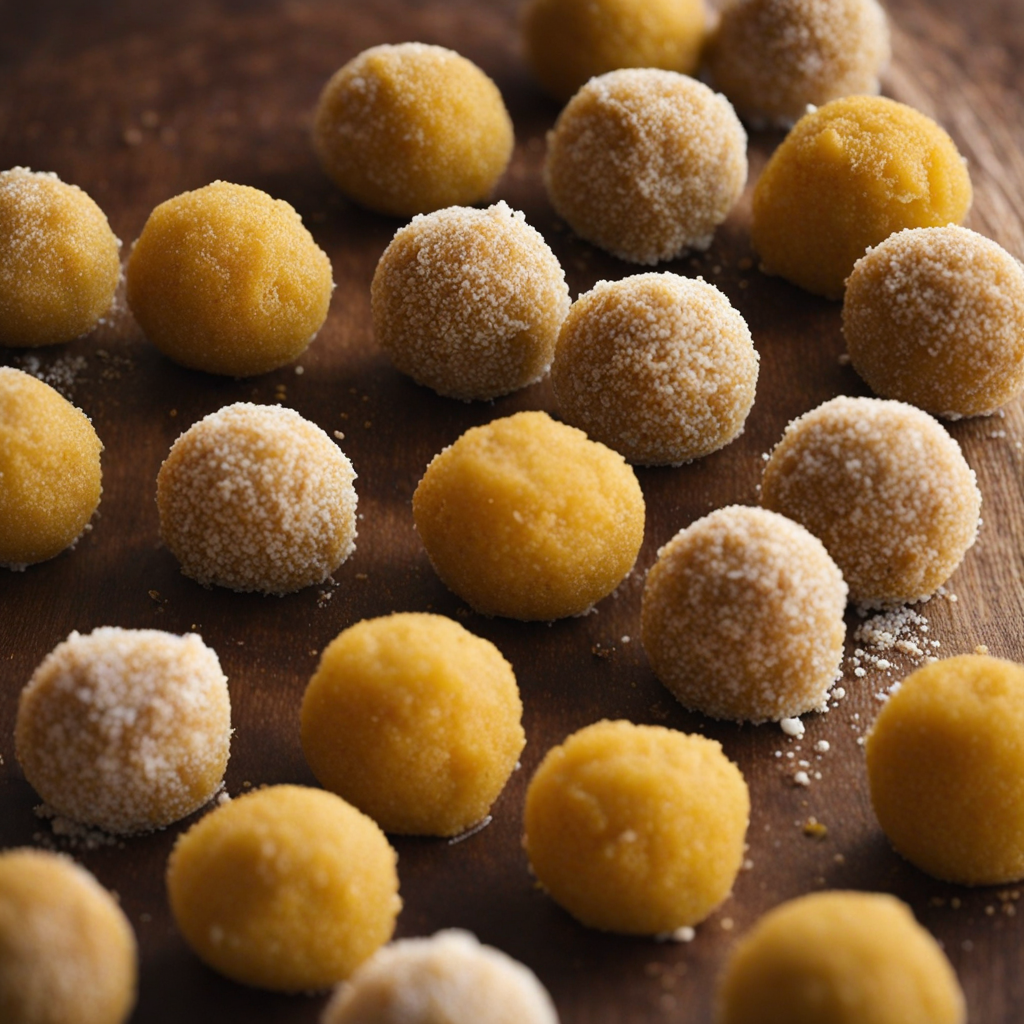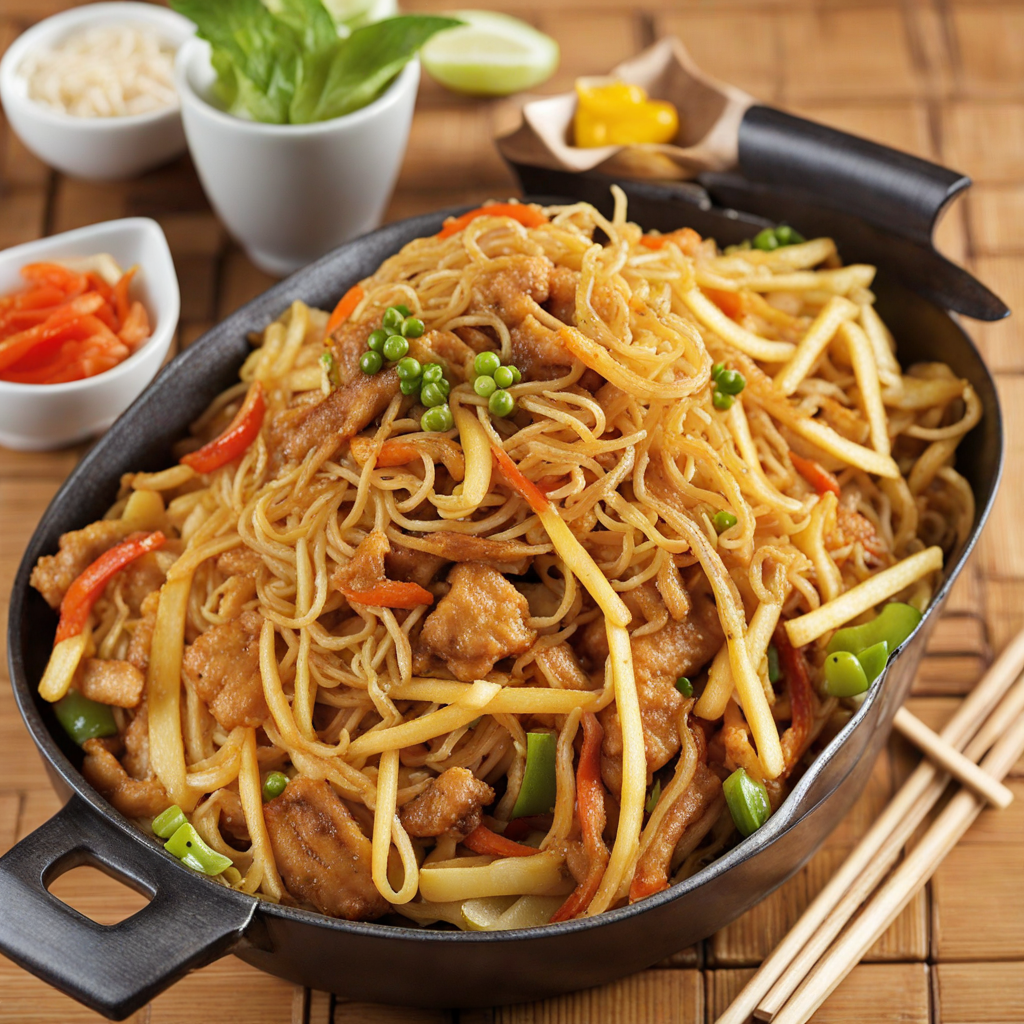Ladoo
Ladoo, a delightful sweet treat from Mauritius, is a confluence of diverse cultural influences, reflecting the island's rich culinary heritage. Traditionally made from chickpea flour (besan), these round confections are often flavored with spices like cardamom and sweetened with jaggery or sugar. The dough is rolled into small balls and then fried until golden brown, resulting in a delightful crunch that gives way to a soft, melt-in-your-mouth texture. Each bite of Ladoo is a harmonious blend of nutty flavors and aromatic spices, creating a taste that is both comforting and exotic. Mauritian Ladoo can also come in various forms, with ingredients like coconut, peanuts, or raisins added to enhance the flavor profile. Some variations incorporate dried fruits or nuts, making them not only a sweet indulgence but also a source of nutrition. The use of ghee adds a rich, buttery essence, while the addition of desiccated coconut brings a tropical twist to the treat. This versatility means that Ladoo can be enjoyed as a snack, dessert, or even as a festive offering during celebrations, embodying the spirit of sharing and community. The experience of savoring Ladoo goes beyond its taste; it is also about the texture and aroma that waft through the air when they are freshly made. Often accompanied by a cup of tea or enjoyed during social gatherings, these sweet balls are not just food; they are a celebration of Mauritian culture and hospitality. Each bite transports you to the vibrant streets of Mauritius, where flavors and traditions blend seamlessly, inviting you to discover and enjoy this treasured culinary gem.
How It Became This Dish
The Sweet Story of Ladoo in Mauritius Ladoo, a beloved confectionery, has woven itself into the culinary fabric of Mauritius, embodying the island's rich cultural diversity and history. This sweet treat, often round in shape and made from various ingredients, has origins that can be traced back to ancient times in South Asia, particularly in India. However, its journey to Mauritius is a testament to the island's multicultural heritage and the evolution of its food practices. Origins of Ladoo The roots of ladoo can be found in ancient Indian cuisine, where it is believed to have been created as early as the 3rd century BCE. Initially made from various grains, nuts, and jaggery, ladoo was considered a nutritious and energy-boosting food, often consumed by warriors and laborers. Over centuries, the recipe evolved, incorporating ingredients like besan (gram flour), semolina, coconut, and a variety of sweeteners, leading to a plethora of ladoo varieties, each with its own regional significance. The term "ladoo" itself is derived from the Sanskrit word "laddhu," which means "a ball" or "a lump." This simple description captures the essence of the sweet, which is typically shaped into small, round balls. The ladoo’s popularity spread across India, becoming a staple in various festivals and celebrations, where it symbolized prosperity and joy. Ladoo's Journey to Mauritius The arrival of ladoo in Mauritius can be linked to the waves of migration that characterized the island’s history. Following the abolition of slavery in 1835, indentured laborers from India were brought to Mauritius to work on sugar plantations. These immigrants brought with them their culinary traditions, including the making of ladoo. As a result, the sweet became integrated into the local culture, adapting to the available ingredients and the palates of the Mauritian people. In Mauritius, ladoo is often made with ingredients such as chickpea flour, sugar, grated coconut, and ghee. The local adaptation also includes variations that incorporate tropical flavors, such as the addition of spices like cardamom or saffron, which lend a unique twist to the traditional Indian recipes. Coconut ladoo, in particular, has become popular, reflecting the island's abundant coconut palms and the influence of Creole cuisine. Cultural Significance Ladoo holds a special place in the hearts of Mauritians, transcending mere culinary enjoyment to represent familial bonds, community spirit, and cultural identity. It is often prepared during significant religious festivals such as Diwali, Ganesh Chaturthi, and Raksha Bandhan, where it is offered to deities as a prasadam (sacred food) and shared among family and friends. During Diwali, the Festival of Lights, ladoo is especially prominent. Families gather to prepare large batches, and the sweet serves as both a symbol of good fortune and a means to share joy with others. The act of making ladoo becomes a communal affair, strengthening social ties and reinforcing cultural traditions. Ladoo is also a common offering during weddings and other celebrations, signifying blessings and good wishes for the couple's future. Its round shape symbolizes completeness and unity, making it an ideal sweet for such auspicious occasions. Development Over Time As Mauritius has evolved, so too has its culinary landscape, and ladoo has adapted accordingly. The fusion of diverse cultures has led to innovative takes on this traditional sweet. Mauritian ladoo now often blends Indian recipes with Creole and Chinese influences, resulting in unique flavors and textures. For instance, some versions incorporate local fruits or spices, creating a distinctive Mauritian twist. In recent years, the rise of the global food movement has also influenced the ladoo-making process. Health-conscious adaptations of ladoo, using alternative sweeteners like jaggery or natural sugars, have emerged, appealing to modern sensibilities while maintaining the essence of the traditional recipe. Vegan ladoo, made without ghee or dairy, has also gained popularity, reflecting broader dietary trends. Moreover, ladoo has found its place in the burgeoning Mauritian tourism industry. Visitors to the island are often introduced to this sweet delicacy, leading to increased appreciation and demand. Local artisans and sweet shops have started to market ladoo as a signature Mauritian product, showcasing the island's culinary heritage to a global audience. Conclusion The story of ladoo in Mauritius is a rich tapestry of history, culture, and evolution. From its ancient Indian roots to its adaptation in the multicultural milieu of Mauritius, ladoo has transcended its original form to become a symbol of celebration, community, and identity. Its significance stretches beyond the taste and texture; it embodies the spirit of sharing and togetherness that is at the heart of Mauritian culture. Today, ladoo continues to be a cherished treat, enjoyed by people of all backgrounds, reflecting the island's harmonious coexistence of diverse traditions. As Mauritius moves forward, ladoo will undoubtedly remain a sweet reminder of its vibrant history and cultural richness, a testament to the enduring power of food to connect people and celebrate life.
You may like
Discover local flavors from Mauritius







